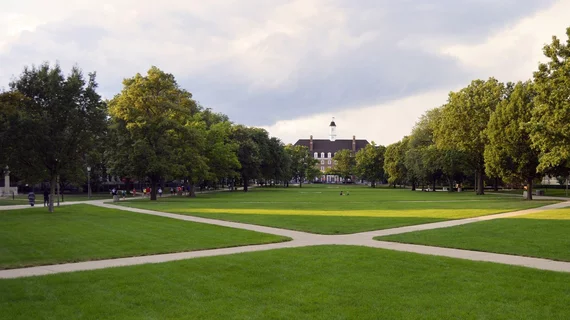College campuses both COVID superspreaders and COVID busters
Of 30 nationally representative college campuses in the U.S., 17 had COVID-19 outbreaks that spread to neighboring communities as classes resumed for the fall.
The researchers who made the finding suggest the first two weeks of a semester place campuses at high risk of becoming superspreaders.
Mechanical engineering professor Ellen Kuhl, PhD, and colleagues at Stanford selected for the review 10 institutions with the highest case counts in the country, along with 10 of the top public schools ranked annually by U.S. News & World Report and 10 private schools from those same rankings.
The team separated public from private institutions because, as the authors note, public colleges and universities tend to draw more students from local communities while their private counterparts tend to attract more from out of state and abroad.
In their study report, published online Jan. 13 in Computer Methods in Biomechanics and Biomedical Engineering, Kuhl and co-authors show that the institutions with infection spikes at back-to-school time had peak seven-day incidences well above 1,000 infections per 100,000 population members.
That rate, they point out, is an “order of magnitude larger than the nationwide peaks of 70 and 150 during the first and second waves of the pandemic.”
The authors further found the colleges and universities adept at containing and controlling outbreaks on campus soon after the spikes were identified as such.
They attribute this success to campus communities’ well-reported case data, defined move-in dates, online classes, compliance with local regulations and aggressive test-trace-isolate strategies.
“Our results confirm the widespread fear in early fall that colleges could become the new hot spots of COVID-19 transmission,” Lu comments in a news item posted by journal publisher Taylor & Francis. “But, at the same time, college administrators should be applauded for their rapid responses to successfully manage local outbreaks.”
Meanwhile the affected residents nearby were hit harder and for longer stretches of time than the colleges’ staff and students.
“Strikingly, local campus outbreaks rapidly spread across the entire county and triggered a peak in new infections in neighboring communities in more than half of the cases,” Lu says.
“We anticipate that the most important aspect upon campus reopening within the coming weeks [for winter–spring classes] will be the human factor,” Lu adds. “Unfortunately, the fall term has shown that the best of all strategies can become meaningless if people do not follow the recommendations.”
The study is posted in full for free.

